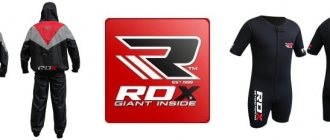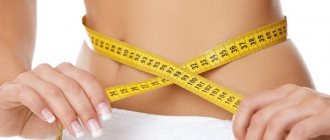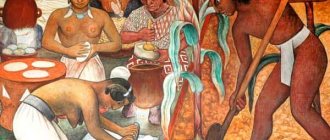If you are going to place an order in an online clothing store, you will not be able to try on the model you have chosen, since it is located at a great distance from you. Therefore, you need to know absolutely all your parameters in order to always be able to choose exactly the size that best suits you. When you know all your indicators, it will not be a problem to order clothes from other cities and even countries, because you will be able to choose the right size based on the data you have. In addition, this skill will definitely come in handy for those who love to sew. After all, in order to sew any item of clothing, you need to know how to take measurements from yourself or from the person for whom you plan to sew these clothes. Therefore, it is imperative to know how to measure your shoulders and other parts of the body.
Shoulder Width Measurement
The main measurement concerning this part of the body is width. If you don't know how to measure your shoulders and where to start, then you should first of all find out the width of your shoulders. This is the easiest part of measuring as you just need to place one end of the measuring tape to the edge of one shoulder and then measure to the edge of the other shoulder. This is called shoulder width. At the same time, you need to make sure that the person is not hunched over, slouched or does not spread his shoulders too wide - they must be in a natural state for the measurement to be as accurate as possible. By the way, knowing your shoulder width can help you not only in choosing clothes in an online store or when sewing your own, but also in sports, since the “feet shoulder-width apart” position is very often used there. And if you know how to measure your shoulders and what their width is, then it will be much easier for you to take this position.
How to take measurements: general rules
- To create a pattern for a dress, skirt or trousers, measurements must be taken using the underwear. When trying on, wear the underwear with which you intend to wear the product. This is important because different bra shapes, for example, can change the height and girth of your bust.
- All measurements are taken on the most developed part of the body. For right-handers, measurements are taken on the right side, for left-handers - on the left.
- When taking measurements, you need to stand straight, without tension, in a position familiar to your body. It is quite difficult to take quality measurements of yourself. When the position of the body changes, its size also changes. A possible way out of the situation: take a product that fits you very well and take measurements from it.
- Mark the natural level of your waist with an elastic band or thin cord - this will simplify the task.
- Since the human body is symmetrical, the pattern is usually only drawn to the middle of the figure. For ease of use, some measurements are recorded in half size. These measurements include the semi-circumference of the neck, chest, waist and hips, back width, width and center of the chest. The remaining dimensions are recorded and used in full.
- Different countries have slightly different pattern making systems and measuring methods. And depending on the school, the names of the measurements may vary within one country. If you are not sure what size we are talking about, read the description. This way you can quickly find a match.
Shoulder coverage
Another important parameter that you need to be able to measure is shoulder circumference. It is necessary to ensure that the sleeves are the right size and not too narrow or too wide. Therefore, everyone should pay special attention to this aspect when learning how to measure shoulders. The main point in this case is the correct choice of measurement location. In fact, upper arm reach is a misnomer because it measures the reach of the forearm, but the name doesn't really matter. But the only important thing is that this parameter must be measured in the widest part, that is, on the biceps. It is worth noting that the hand should be in a relaxed state, freely extended along the body. There is no need to strain your muscles during the measurement process, since in this situation the sleeve will be much wider.
It is also very important not to tighten the measuring tape on your bicep too much so that the skin underneath it contracts, otherwise the reading will be inaccurate and the sleeve will end up smaller than needed this time. To measure, place the end of the measuring tape at the selected point and wrap the tape around your forearm until you feel that you are starting to pull - then take the final measurement. For accuracy, this measurement can be performed several times.
Standard shoulder width for men
It is important to understand that an athletic figure and broad shoulders in men are primarily a matter of proportionality and body type (endomorph, ectomorph or mesomorph), and not muscle size. Excessively wide shoulders visually reduce a person’s height, just as the “height” of a hairstyle and the presence/absence of facial hair can make the body more powerful.
The secret is that, according to Da Vinci’s canonical proportions, the ideal width of a man’s shoulders is ¼ of his height - that is, 45 cm with a height of 180 cm. According to the same standards, the girth of the biceps should be equal to the girth of the neck and calves.
Greek statues
Interestingly, ancient Greek statues depicting gods and athletes, although they follow the rules of ideal proportions, are still made with certain violations of human anatomy - for example, tense back muscles are impossible with relaxed pecs.
Ancient sculptors improved not only the proportions of the bodies of the athletes who posed for them, but also changed reality, giving ease to uncomfortable poses and creating a composition of tense muscles that was unique in life. Apparently, the secret of the ideal is that it cannot be achieved.
Da Vinci's canonical proportions
The drawing, created by Leonardo Da Vinci and depicting the figure of a naked man in two superimposed projections, served as an illustration for a book about the life of the Roman architect Vitruvius, who was the first to describe on paper the proportions of an ideal person.
The pose with arms spread and legs brought together is inscribed in a square, and the pose with arms and legs spread out to the sides is inscribed in a circle. The center of the circle is the navel of the figure, and the center of the square is the genitals. Some explanations for the picture (1):
- the span of human arms is equal to his height
- human height is four cubits from the fingertips
- the distance from the hairline to the chin is 1/10 of its height
- the distance from the top of the head to the chin is 1/8 of its height
- the distance from the top of the head to the nipples is 1/4 of its height
- maximum shoulder width is 1/4 of its height
- arm length is 2/5 of its height
Figure proportions for artists
Beginning artists are taught how to draw a person correctly, starting with choosing the size of the head. The total height of the figure should be eight heads (see paragraph 4 of Da Vinci's rules). The next step is to fit the circle into the head (see title illustration).
The height of the head and neck should be two such circles, exactly the same as the distance from the navel to the lower border of the neck, while the maximum width of the shoulders should be three. The waist width is no more than one and a half circles, otherwise the proportions of the figure will be significantly distorted.
Figures of muscular people
One of the most important rules of proportionality for a muscular person is the ratio of shoulder circumference to waist width (see Figure 3). If we take the waist width as “a” and the shoulder circumference as “b”, then the ideal ratio would be (a+b)/a = a/b = 1.618.
Shoulder length measurement
Another parameter that may be useful to you is the length of the shoulder. Given the fact that there is also a neck between one shoulder and the other, you will not be able to divide the width of the shoulders in half to get each indicator separately. Therefore, a separate measure was introduced - shoulder length. It is measured from the base of the neck to the end of the shoulder, and again it is best to take several measurements to ensure that you get a more accurate figure and do not make mistakes. In clothing, the shoulder length may differ from your anatomical parameters - it depends on how exactly you want to sew the item of clothing.
LiveInternetLiveInternet
korfiati.ru Anastasia Korfiati
Before you start sewing any product, you need to take measurements. A professional dressmaker knows that taking measurements of a woman’s figure correctly is already half the success. And even if you have never taken measurements, strictly following the instructions below, you can do this without difficulty.
Important: before you start taking measurements, put on the underwear that you intend to wear under this product, since modern tights can have a “tightening” effect and remove from 1 to 3 cm in volume, while bras, on the contrary, can add volume.
Before taking measurements, tie a thin fabric trim around your waist; this simple technique is used by all professional dressmakers. It makes it easier to take measurements related to the waist line. We advise you to read about types of female figures
When taking measurements, stand straight, without tension, do not slouch, or bend your leg at the knee. Once you take your measurements, you can compare them to standard women's measurements to better understand your body shape.
1. Chest circumference This measurement is taken at the most protruding points of the chest. The tape measure should not be tightened or loosened too much. It should fit tightly, but without tension, to the body. Measurement The girth above the chest is measured in the same way, but above the mammary glands.
2. Waist circumference You need to take measurements at the narrowest point, tightly clasping your waist.
3. Hip circumference The measurement is measured at the most convex points of the buttocks. For women who have the “golife effect”, it is also recommended to duplicate it - take measurements (measure the volume just below the buttocks along the protruding “golife” lines). If the second measurement taken is significantly smaller than the first, use a second one, especially on items that have a narrow silhouette, such as a sheath skirt. In this case, the product will have to be adjusted directly when trying on the sour cream product.
4. Chest height The measurement should be taken from the point where the neck meets the shoulder to the most protruding point of the chest.
5. Front length Front length to waist - this measurement is taken from the transition point of the neck to the shoulder (base of the neck) through the most protruding point of the chest to the waist.
6. Length of the shoulder item The length of the shoulder item (dress, blouse, jacket, coat) is measured from the seventh cervical vertebra to the desired length of the item.
6a. Length of the garment The length of the garment (skirt, trousers) is measured from the waist to the desired length of the product.
7. Back length Take measurements from the seventh cervical vertebra to the waist line.
8. Back width Take the measurement horizontally along the straightened back through the center of the shoulder blades.
9. Shoulder width Take this measurement horizontally along the most prominent points from one shoulder to the other.
10. Shoulder length Take the measurement from the base of the neck to the extreme point of the shoulder (the point of articulation of the shoulder with the arm).
11. Sleeve length The measurement is taken from the end of the shoulder to the wrist along the arm slightly bent at the elbow. 3/4 sleeve length is measured in the same way, but to the elbow.
12. Arm circumference (upper part) Take the measurement horizontally, along the widest upper part of the arm.
13. Neck circumference Take this measurement around the base of the neck.
14. Length of the leg from the outside Take measurements from the waist along the outside of the leg to the floor.
15. Length of the leg from the inside Take measurements along the inside of the leg from the groin to the floor.
IMPORTANT! The difference between the length of the leg on the outside and inside gives an important measurement that is used when constructing trousers - BC - seat height.
The sun can also be measured: sit straight on a hard surface, tie a ribbon around your waist. The length from the tape to the chair is equal to BC - the height of the seat. If the measured BC value differs from the calculated value, take the average between them.
16. Thigh height. Take this measurement along the outside of the thigh from the waist to the hip line.
Important! For jackets, dresses, blouses and coats, the main measurement is chest volume. For skirts and trousers, the main measurement is the volume of the hips.
17. Armhole depth. The armhole depth (AP) is calculated using the Formula. However, to check the correctness of the calculation, you can additionally measure the Armhole Depth.
To do this, take a strip of paper and hold it under your armpit at the back. Measure the Armhole Depth from the 7th cervical vertebra to the strip of paper as shown in the picture. If the measured and calculated values differ, the average between them is taken.
18. Seat height. Seat height is measured as follows: tie a fabric tape around your waist, sit directly on a hard surface, for example, on a stool. Measure the distance from your waist to the surface. Also, the seat height can be calculated using the formula.
Separate parameter
These are the three main parameters that are the keys to how to measure your shoulders correctly. But there is an additional aspect that does not require a measuring tape, because it must be measured visually. This is the tilt of the shoulders. This parameter has only three values, but it can greatly affect the process of sewing clothes. In this case, it doesn't take a genius to figure out how to measure your shoulders and their slope. It is enough just to know that the standard degree at which they are located is somewhere between 20 and 25. Such numbers are considered normal, while a larger angle means sloping shoulders, and a smaller angle means square. This parameter should also be taken into account when choosing clothes remotely or when sewing them yourself.
How to build broad shoulders: effective exercises for men
Broad and sculpted shoulders and an inverted triangle figure are a source of pride for any man. But how to make your shoulders wider? Is it possible to pump up the muscles of the shoulder girdle at home? These are the top questions guys ask when trying to increase shoulder width. It is believed that the easiest time to expand the shoulder girdle is only until the age of 20. At this age, the skeleton is actively forming and bone compaction occurs. However, you can make your shoulders visually wider even at a more mature age. It is necessary to follow a training regimen and include basic exercises to pump up the deltoid muscles and thereby make your shoulders wider. This set of exercises is designed for men with an average level of difficulty. The workout can be done both in the gym and at home. Required equipment: dumbbells and barbell.
Table of measurements for typical female figures
If you need measurements taken from you, but there is no one to help you with the measurements, you can independently measure only the chest girth (for shoulder products) and use it to determine your size in the table of women's measurements for a conventionally typical figure. And use standard measurements for size. For waist products, measure the circumference of your hips, according to which you select the appropriate size and appropriate measurements.
| Measurement value | ||||||
| Size | 40 | 42 | 44 | 46 | 48 | 50 |
| Transverse dimensional characteristics | ||||||
| Bust | 80 | 84 | 88 | 92 | 96 | 100 |
| Waist circumference | 60 | 64 | 68 | 72 | 76 | 80 |
| Hip circumference (20 cm below the waist line) | 86 | 90 | 94 | 98 | 102 | 106 |
| Hip circumference (10 cm below the waist line) | 80 | 84 | 88 | 92 | 96 | 100 |
| Back width | 34 | 35 | 36 | 37 | 38 | 39 |
| Chest Width | 31,5 | 32,5 | 33,5 | 34,5 | 35,5 | 36,5 |
| Shoulder width | 12,4 | 12,7 | 13 | 13,3 | 13,6 | 13,9 |
| Distance between chest centers | 16,8 | 18 | 19,2 | 20,4 | 21,6 | 22,8 |
| Neck circumference | 35,5 | 36,5 | 37,5 | 38,5 | 39,5 | 40,5 |
| Circumference above the chest | 74 | 78 | 82 | 86 | 90 | 94 |
| Underbust circumference | 67 | 71 | 75 | 79 | 83 | 87 |
| Shoulder circumference | 26 | 27 | 28 | 29 | 30 | 31 |
| Elbow circumference | 22,2 | 23,6 | 25 | 26,4 | 27,8 | 29,2 |
| Wrist circumference | 15 | 15,5 | 16 | 16,5 | 17 | 17,5 |
| Hip circumference | 48 | 51 | 54 | 57 | 60 | 63 |
| Knee circumference | 32,2 | 33,6 | 35 | 36,4 | 37,8 | 39,2 |
| Ankle circumference | 21,8 | 22,4 | 23 | 23,6 | 24,2 | 24,8 |
| Longitudinal dimensional characteristics | ||||||
| Height | 159 | 161,5 | 164 | 166,5 | 169 | 171,5 |
| Back length from the level of the seventh cervical vertebra to the waist line | 40 | 40,5 | 41 | 41,5 | 42 | 42,5 |
| Back height from the level of the seventh cervical vertebra to the chest line | 24 | 24,2 | 24,4 | 24,6 | 24,8 | 25 |
| Armhole height | 21 | 21,2 | 21,4 | 21,6 | 21,8 | 22 |
| Chest height | 33,5 | 34 | 34,5 | 35 | 35,5 | 36 |
| Hips height from waist to hips | 19,4 | 19,7 | 20 | 20,3 | 20,6 | 20,9 |
| Arm length | 56,4 | 57,2 | 58 | 59,6 | 60,4 | 61,2 |
| Seat length | 26,4 | 27,2 | 28 | 28,8 | 29,6 | 30,4 |
| Arc through the groin area | 61 | 63,5 | 66 | 68,5 | 71 | 73,5 |
| Arc of the torso through the groin area | 136,5 | 140 | 143,5 | 147 | 150,5 | 154 |
| Distance from waist to knee | 58,4 | 59,2 | 60 | 60,8 | 61,6 | 62,4 |
| Distance from waist to floor | 100,4 | 101,7 | 103 | 104,3 | 105,6 | 106,9 |
| Distance from the seventh cervical vertebra to the floor | 140,4 | 142,2 | 144 | 145,8 | 147,6 | 149,4 |
After all the necessary measurements have been taken, calculations are made and allowances are added for the freedom of fit. Then they move on to constructing the basic pattern.
sew-myself —— cutting and sewing
Subscribe to “SEW-MYSELF.ru” on social networks to always be aware of new articles!
Follow @sew_myself Subscribe Subscribe to news Like Pinterest
Clothing sizes in shoulders on Aliexpress: table
When all the measurements are taken, you can start choosing the size on Aliexpress . Let’s say right away that you can’t be guided by shoulders alone; selection may require additional measurements, such as waist size, chest size, and so on. You can find out what exactly to measure from the seller’s table. In it, he always describes in detail what parameters the clothes correspond to.
In this table you can choose clothes without shoulder size, but it itself is not complete:
Shirt selection
And here is a more detailed plate:
Detailed table
As you can see, there are all the measurements that may be needed in choosing the size. Your task is just to substitute your parameters.
Sellers do not always indicate only Chinese sizes. For example, you can find size plates for different countries.
This variety of tables is due to the fact that Aliexpress does not have a unified sizing system and each seller uses the one that is more convenient for him. Accordingly, you cannot choose a size from one seller and order the same from another - they may differ. Be sure to remember this and compare your measurements with all the plates you come across.
How to measure shoulders for clothes on Aliexpress?
By themselves, measurements for Aliexpress are a simple procedure. You just need to know how it's done. To take measurements you will need a pen, paper and a measuring tape. By the way, you can’t do without an assistant who should take measurements.
First, stand up straight. It's even better if you relax and remain calm, as your body position will change due to tension.
Shoulder width
It is also worth mentioning that in order to carry out measurements and obtain a reliable result, it is necessary to remove everything unnecessary, since excessive decor or decorations will distort the result.
First, determine which are the most prominent points of the shoulders. Then apply a measuring tape to them and check the length. In this case, you will get the width of the shoulders.
But there is one more measure - shoulder length. It is measured differently. Here you need to measure the distance from the place where the arm and shoulder connect to the base of the neck. To get a more reliable parameter, you should bend your arm slightly.
Shoulder length
Knowing this measurement is important for long sleeve clothing. So, if you make a mistake in the measurements, you may choose the wrong sleeve length.
As we have already said, it will not be possible to measure these parameters without an assistant. But if you still have no one to ask, then you can take an old T-shirt and get the necessary information from it.
The process itself
When starting to take parameters, you should know exactly what measurements are required. In order to sew a men's shirt, you need to know how to measure shoulder width, sleeve length, neck circumference and product length. Tailor's measuring tools can help with this.
was invented by a French tailor at the beginning of the nineteenth century. It is a narrow strip of durable material one and a half meters long with metal clips at the ends. A graduation scale is applied on both sides of the tape. To avoid inaccuracies in taking measurements, it is advisable to use the same tool when sewing a product.











